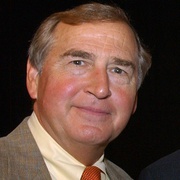
Marine Corps photo by Cpl. Demetrius Morgan
The Easiest Way We Could Stop the Prospect of Nuclear Terrorism
The core truth: no nuclear material means no nuclear bombs. By Graham Allison
On Monday, President Obama will join Chinese President Xi Jinping, German Chancellor Angela Merkel, and 40 other heads of state in the Netherlands for the 2014 Nuclear Security Summit. It will be the third in a series of summits initiated by Obama to address what he has called “the most immediate and extreme threat to global security”: nuclear terrorism. These gatherings have become a powerful means of motivating leaders to eliminate or secure the fissile material that terrorists could use to carry out a nuclear 9/11.
Thanks to the priority Obama and others have given this threat, and the work they have done to combat it, in just the last five years, the number of states with nuclear-weapons material that could fuel a terrorist’s bomb has shrunk by more than one-third: from 38 to 25. These efforts are creating the counterterrorism counterpart of the UN’s long-established nuclear-weapons-free zones (NWFZ), which ban the use, development, or deployment of nuclear weapons. The 1967 Treaty of Tlatelolco , for example, enshrines the commitment of all states in South America and the Caribbean to no nuclear weapons. Each of the members is safer knowing that others in its neighborhood have forgone nuclear weapons as well.
The core truth about preventing nuclear terrorism is this: no nuclear-weapons material means no mushroom clouds and no nuclear terrorism. States that are free of highly enriched uranium or separated plutonium can be certain that they will not be the source of the core of a terrorist’s nuclear bomb. Regions that are free of nuclear-weapons material, and commit themselves to remain so, should be recognized as nuclear-weapons-material-free zones (NWMFZ).
Quantity of Civilian Highly Enriched Uranium, by Country
At the second Nuclear Security Summit two years ago, Vietnam’s prime minister pledged to eliminate his nation’s remaining stockpile of highly enriched uranium—an effort completed last year. In fact, the Association of South East Asian Nations (ASEAN) is now the world’s first de facto NWMFZ, and it should codify this reality in a formal agreement among its members while challenging other plausible candidates to join this distinguished club.
In Europe, six nations—Austria, the Czech Republic, Hungary, Romania, Serbia, and Ukraine—have become nuclear-weapons-material-free in the past five years. Belarus and Poland are the only countries preventing Eastern and Central Europe from becoming the second NWMFZ. In Africa, only one state, South Africa, continues to keep a cache of nuclear weapons material large enough to allow terrorists to build more than 20 nuclear bombs. South America could complement its status as the first NWFZ by becoming an NWMFZ—if it could persuade the single holdout, Argentina, to dispose of its 17 pounds of highly enriched uranium.
Vulnerable weapons material anywhere is a threat to citizens everywhere. An NWMFZ, however, reduces the risk that states in a given region will be the targets of a nuclear attack by terrorists. If a terrorist group succeeds in buying or stealing fissile material, transporting the material or a bomb raises the odds of being discovered. Targets closer to the material’s point of origin are thus more attractive.
Timeline: Countries Eliminating Weapons-Usable Nuclear Materials
The significance of states and regions eliminating all nuclear-weapons material becomes more apparent if we imagine that the current crisis in Ukraine had happened five years ago. At the first Nuclear Security Summit in Washington in 2010, former Ukrainian President Viktor Yanukovych pledged to remove 15 bombs’ worth of highly enriched uranium at several sites in Sevastopol, Kharkiv, and Kiev. Two years later, at the 2012 summit in Seoul, Yanukovych announced that Ukraine had finally eliminated all weapons-usable material in the country.
The most important takeaway from the Nuclear Security Summits in Washington and Seoul is that heads of state have the power to deny terrorists the means to achieve their deadliest ambitions. That’s why leaders at this week’s summit should recognize NWMFZ as another important step toward a world free from the threat of nuclear terror, and challenge holdouts in South America, Africa, and Central and Eastern Europe to help their regions achieve this status.
NEXT STORY: Every State's Territorial Disputes in One Map


